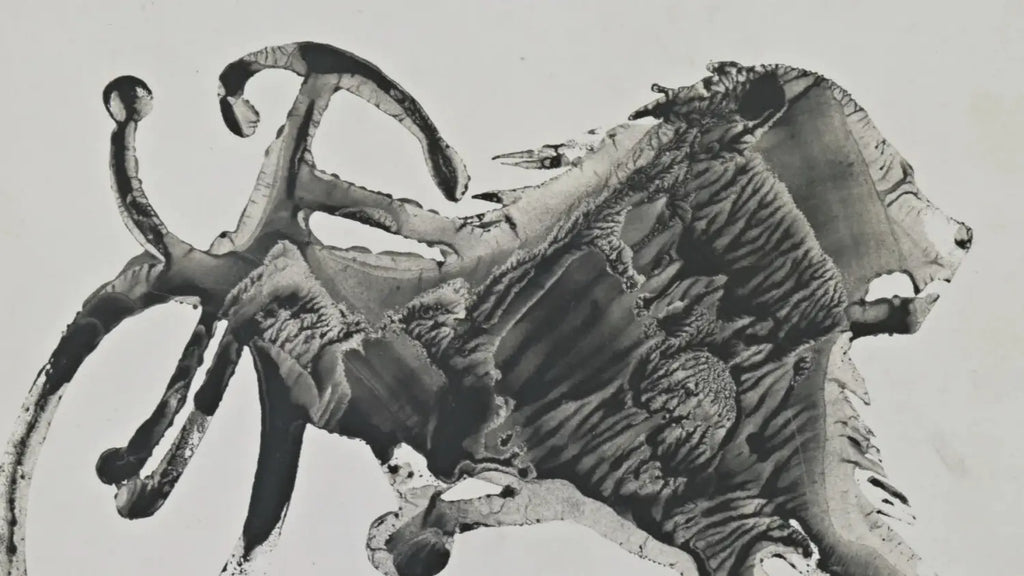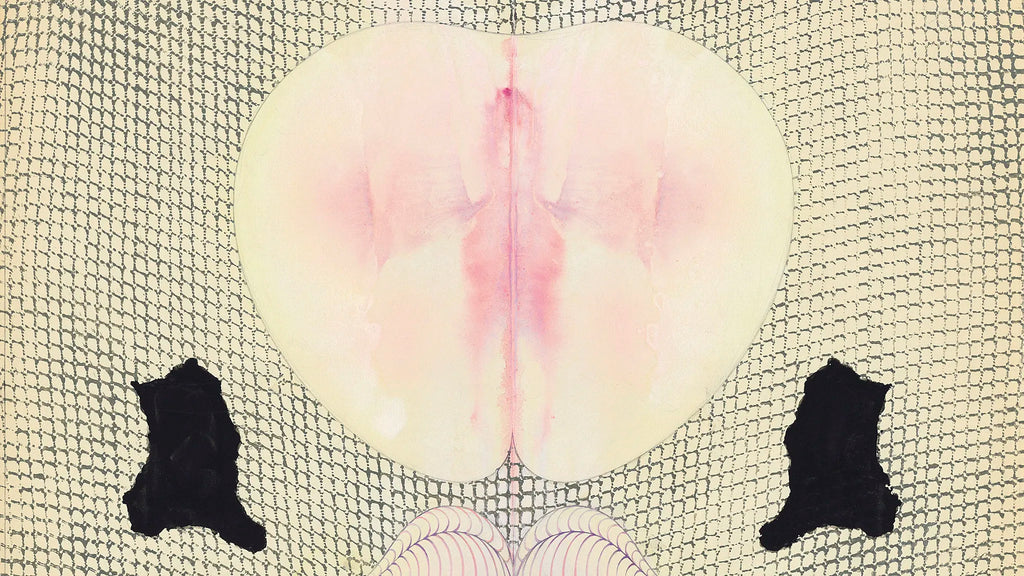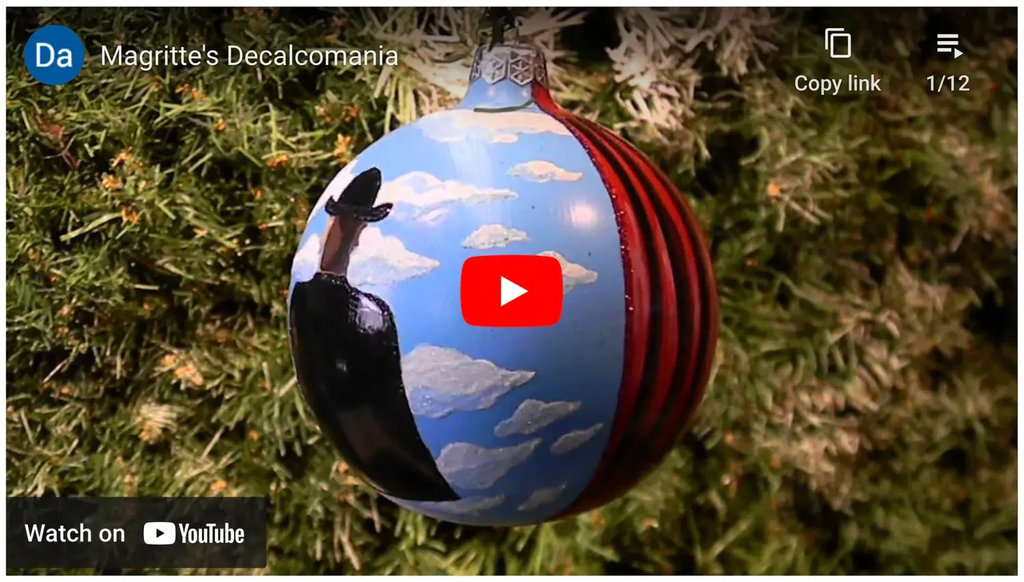초록, 기타 세상 및 유기적 : Decalcomania Art의 지저분한 마법
Decalcomania는 두 표면 사이에 젖은 페인트 또는 잉크를 눌러 추상 패턴을 만드는 초현실주의 기술입니다. 이 방법은 오스카 도밍 게즈를 통해 20 세기 초 에이 기술을 개척 한 독일 예술가 인 Max Ernst에 의해 대중화되었습니다.
이 기사에서 우리는 Decalcomania의 역사, 초현실주의 예술가들이 어떻게 사용했는지, 자신의 데칼 코 마니아 예술을 만들기 위해 단계별 지침, 그리고 가장 주목할만한 데칼 코 마니아 예술 작품의 쇼케이스를 탐구합니다.
데칼 시나니아의 역사
Decalcomania는 조각과 인쇄물이 도자기 또는 기타 재료로 옮겨 질 수있는 장식 기술입니다. 이 기술은 1750 년경 영국에서 상업적으로 처음 사용되었으며 미국으로 수입되었습니다. 적어도 1865 년 초. 그 발명은 프랑스 출신의 조각사 인 Simon François Ravenet에 기인 한 것으로, 나중에 영국으로 이사하여 그 과정을 완성했으며, 그는 "décalquer".
공정에는 잉크, 페인트 또는 다른 매체를 표면에 적용하고 여전히 젖은 상태에서 종이, 유리 또는 알루미늄 호일과 같은 재료로 덮는 것입니다. 제거하면 재료는 패턴을 전달합니다 그것은 추가로 장식 될 수 있습니다. Decalcomania의 가장 일반적인 예는 포함됩니다 종이에 페인트를 바르고 접습니다, 압력을 적용한 다음 종이를 전개하여 거울 패턴을 드러냅니다.
미술에서 사용하는 것 외에도, Decalcomania는 대량 생산 된 상품 전송 또는 "데칼"으로 알려진 제품 레이블과 같은 상업용 응용 분야에 사용되었습니다. 유리화 가능한 데칼 시나니아는 세라믹, 유리, 판금, 주조 금속 또는 기타 재료로 장식 또는 비문을 전달하는 데 사용되는 데칼 코마니아의 한 유형입니다. 인상을주십시오.
초현실주의 예술의 데칼 코 마니아
이 기술은 초현실주의 자들이 의식적으로 통제하기보다는 우연히 이미지를 만들기 위해 채택되었습니다. 초현실주의 자 Óscar Domínguez는 그의 작품을 "사전 개체가없는 데칼 코 마니아"라고 언급했다. 그는 1936 년에 한 장의 종이 또는 다른 표면에 얇게 퍼진 Gouache를 사용 하여이 기술을 가져간 다음 캔버스와 같은 다른 표면으로 눌렀습니다. Domínguez는 Black Gouache를 사용했지만 나중에 색상이 나타났습니다. 독일 예술가 Max Ernst는 또한 Hans Bellmer와 Remedios Varo와 마찬가지로 Decalcomania를 연습했습니다. 살바도르 달리도 멍청합니다. 아래를 참조하십시오.
이 기술을 통해 예술가들은 추상적이고 다른 세상의 풍경과 표현과 현실의 전통적인 개념에 도전하는 생물을 만들 수있었습니다. 결과 이미지는 종종 풍경, 유기 형태 또는 추상 모양과 기술과 유사합니다. 기회와 자발성에 크게 의존합니다.
Decalcomania에서 발견되는 다른 세상 또는 꿈 같은 패턴은 초현실주의 자의 목적에 적합했습니다. Ernst와 같은 예술가들은 동굴, 나무, 암석을 드러내는 전달 효과를 이용할 것입니다.
색상, 모양 및 자국 추상 미술 예술가가 감정, 아이디어 및 경험을 전달할 수있는 혁신적인 시각적 언어를 제공합니다.
예술 작품의 주제에 중점을 두지 않으면 서 추상 예술이 만들어지는 과정과 자료가 훨씬 더 중요합니다. 질감, 깊이 및 특히 색상은 작가의 의도를 전달하는 데 중요한 도구가됩니다.
나만의 데칼 코 마니아 예술을 만듭니다
나만의 데칼 코 마니아 예술을 만드는 것은 최소한의 재료가 필요한 재미 있고 쉬운 과정입니다. 단계별 가이드가 있습니다 ...
- 작업 표면을 준비하여 시작하십시오. 젖은 페인트로부터 보호하기 위해 플라스틱 또는 왁스 종이 층으로 덮으십시오.
- 페인트를 선택하십시오. 아크릴 페인트는이 기술에 적합하지만 다른 유형의 페인트를 실험 할 수 있습니다.
- 페인트 층을 한 표면에 바릅니다. 페인트 브러시 나 팔레트 나이프를 사용하여 페인트를 적용 할 수 있습니다. 레이어가 패턴을 만들 정도로 두껍지 만 두껍지 않아 건조하는 데 오랜 시간이 걸립니다.
- 페인트 표면에 다른 표면을 누릅니다. 종이, 캔버스 또는 잎이나 직물 조각과 같은 다른 물체를 사용할 수 있습니다.
- 아래로 단단히 누르십시오 그런 다음 상단 표면을 들어 올려 페인트로 생성 된 패턴을 드러냅니다.
- 과정을 반복하십시오 최종 결과에 만족할 때까지 색상과 표면이 다릅니다.
주목할만한 Decalcomania 아트 워크
Decalcomania는 예술사에서 가장 복잡하고 경외감을 불러 일으키는 작품을 만드는 데 사용되었습니다. 다음은 유명한 데칼 코마니아 아트 워크의 몇 가지 예입니다.
Max Ernst의 신부의 복장

아티스트
맥스 에른스트 (1891-1976)은 독일 화가이자 조각가였으며 예술의 비이성 옹호자 중 한 사람이자 초현실주의의 자동화 운동의 창시자였다.
작품
신부의 복장은 그 예입니다 어른스트의 진실성 또는 환상 주의적 초현실주의, 전통적인 기술이 부적절하거나 불안한 주제에 적용되는 것.
이 그림은 붉은 깃털의 퍼짐과 함께 매우 두꺼운 재료를 결합한 것처럼 보이는 정교한 복장의 신부를 묘사합니다. 중심 장면은 사진이있는 사진 왼쪽 상단에서. 신부가 같은 포즈로 나타나는 곳에서, 그녀가 자신과 떨어져있는 자란 고전적 유적지의 풍경을 뚫고 ...
신부의 복장 1940 년에 예술가가 예술계 내에서 두드러진 위치를 세웠고 그의 상상력의 길을 자유롭게 탐색 할 수있는 시점에서 완성되었습니다.
René Magritte의 Décalcomanie

아티스트
René Magritte (1898-1967) 비정상적인 맥락에서 친숙한 대상.
작품
"Décalcomanie"는 변화와 은폐의 개념을 탐구합니다. 그림은 외부 세계 내의 예술가의 존재를 그의 내면의 예술가의 존재와 대조함으로써 보이지 않는 것을 드러내려고합니다.
이 그림은 흐린 하늘에 서있는 그림을 묘사하고 캔버스의 다른 부분은 이전에 커튼으로 숨겨진 구름을 보여줍니다. 이 병치는 모호함을 만들어 내고 시청자들이 본 것과 숨겨진 사람, 실제와 상상의 관계에 의문을 제기하도록 초대합니다. 그만큼 부정적인 공간 사용 남자의 개요를 나타내려면 시청자가 이미지의 양쪽에 집중하고 같은 것을 볼 수 있습니다.
Decalcomania는 두 표면 사이에 젖은 페인트 또는 잉크를 눌러 추상 패턴을 생성하는 것이 포함됩니다. 그러나이 특정 작품에서 Magritte는 전통적인 기술을 사용하지 않고 오히려 Decalcomania의 개념을 우리의 실존 동전의 양면으로 작용하는 변화와 은폐의 아이디어를 가지고 놀기위한 자존심으로 사용합니다.
오스카 도밍 게즈에 의해 제목이 없습니다

아티스트
Óscar Domínguez (1906-1957) 초현실주의 그림을 느슨하게 렌더링했습니다. 그는 자신을 헌신했다 어린 나이에 그림 심각한 질병을 앓은 후 그의 성장에 영향을 미치고 얼굴 뼈 프레임과 사지의 점진적인 변형을 일으켰습니다. Domínguez는 Decalcomania의 자동 기술을 개척했습니다 ...
작품
Domínguez는 그의 작품을 "선입견이없는 데칼 코 마니아". 그는 처음에 종이 나 유리에 Gouache를 사용한 다음 캔버스에 쥐어 짜십시오.
"Untitled"에서 Domínguez는 유동성과 움직임의 감각을 불러 일으키기 위해 Decalcomania를 능숙하게 사용합니다. 이것 종이에 Gouache Transfer는 자발적으로 나타나는 것처럼 보이는 유기농 모양과 패턴을 만들었지 만 우리는 볼 수 있습니다. Domínguez는 데칼코마니를 전술적으로 사용하여 사자 갈기의 움직이는 질감을 표현했습니다. 예술가는 놀라운 구성을 활용하여 꿈같은 구성을 구성했습니다. 사냥을 하는 사자의 유려한 움직임 속에서 현실과 상상의 경계가 모호해지는 곳입니다.
살바도르 달리의 데칼코마니아

아티스트
살바도르 달리(1904-1989)는 기술적 기술, 정확한 초안 솜씨, 그리고 충격적이고 기괴한 이미지 그의 작품에서.
삽화
'데칼코마니아'는 1936년 살바도르 달리가 창안한 작품이다. 이 작품 골격이 특징 가진 여자 꽃의 머리, 모티브는 눈에 띄었다 달리의 작품에서 이 기간 동안. 그림은 Naïve Art(Primitivism) 스타일로 전경에 데칼코마니 아치형 풍경이 특징입니다. 풍경은 신비로움과 호기심을 불러일으키는 복잡하고 거미줄 같은 패턴으로 구성되어 있습니다. 수수께끼 같은 해골의 중심 인물을 통해 이 그림은 데칼코마니 기술의 원시적인 다양성을 보여줍니다. 그 의미는 삶과 죽음에 대한 모든 종류의 해석에 폭넓게 열려 있습니다.
Hans Bellmer의 Sans 역가

...
결론
데칼코마니아는 매혹적이고 예측할 수 없는 초현실주의 기법 이는 수십 년 동안 예술가들에게 영감을 주었습니다. 이 방법으로 생성된 유기적이고 추상적인 패턴은 표현과 현실에 대한 전통적인 개념에 도전하여 예술가들이 신비감과 호기심을 불러일으키는 초자연적인 풍경과 생물을 창조할 수 있게 해줍니다.
숙련된 예술가이든 이제 막 시작하든 데칼코마니아는 재미있고 쉽게 시도해 볼 수 있는 기술입니다. 몇 가지 기본 재료와 실험하려는 의지만 있으면 창의성과 비전을 반영하는 독특하고 예측할 수 없는 패턴을 만들 수 있습니다.
—




